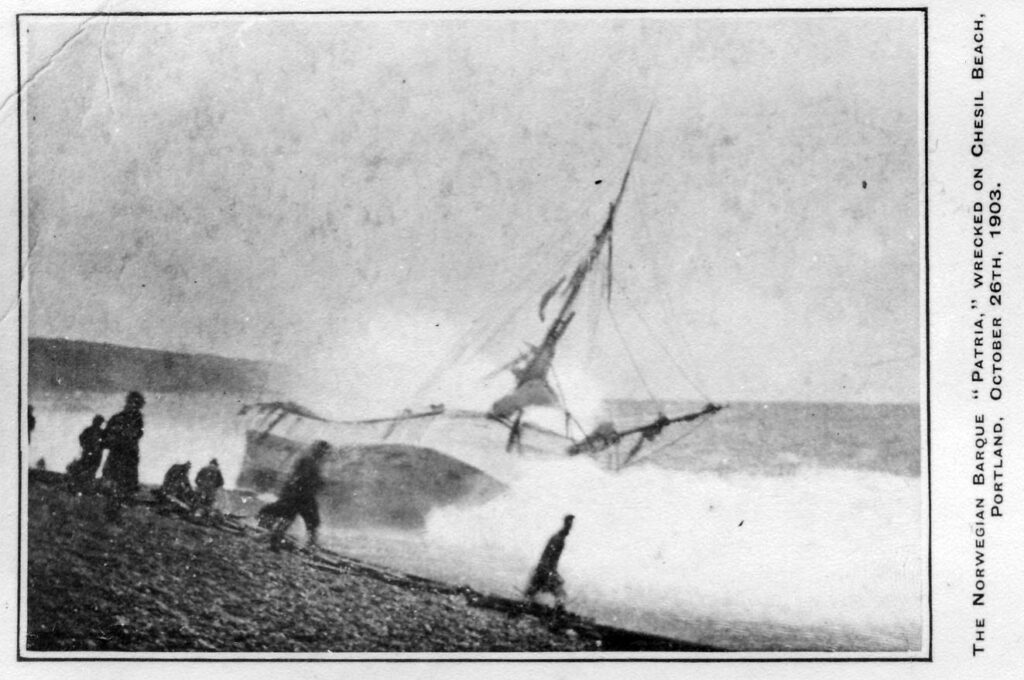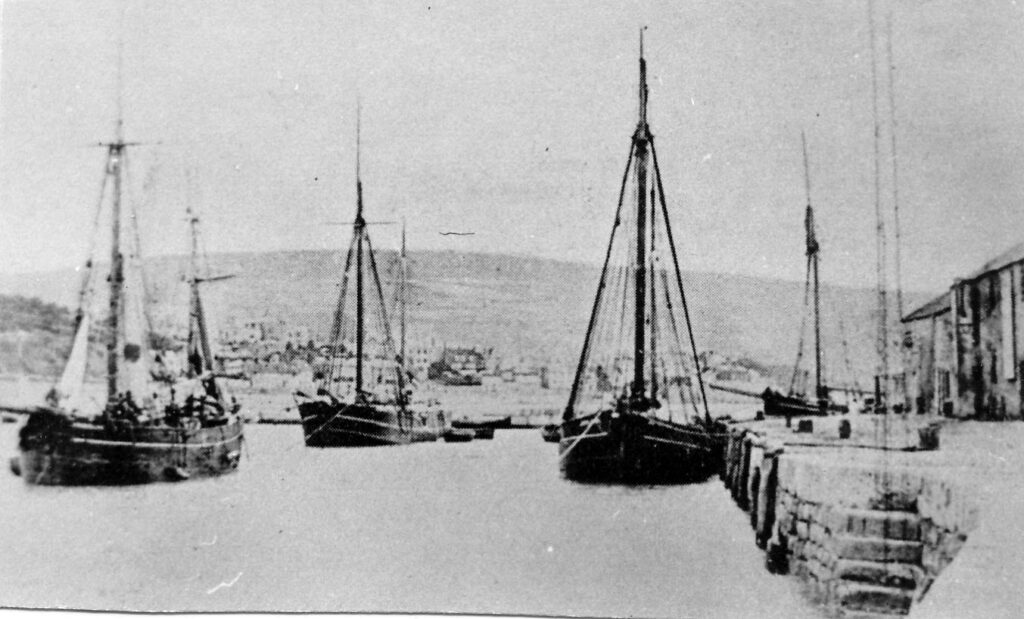Burial registers are an incredibly useful resource for those researching family history. Most entries record the name, age and place of abode of the person who has died, but sometimes extra notes are included in the margins. In the second of three blogs we will look at some of the interesting information that can be found hidden in these records, so stay tuned! You can read part one here!
Shipwrecks and Plane Crashes
Drownings and shipwrecks feature frequently in the burial registers of coastal parishes. There are many entries where the name of the person is not known and they are just recorded as a male or female body that has been washed ashore, but any distinguishing marks are carefully noted in the hope that they can help identify the body.
In August 1866 in Puncknowle an unidentified male who had been washed ashore was buried and the register notes that his clothing was marked ‘W.A.Adams’. A later note records that relatives had visited and supplied his full name, William Allen Adams, and age, 38, as well as the fact that he was from Torquay, where he had drowned.
It is not only drownings and shipwrecks that lead to burials of unidentified bodies. The register from Long Bredy in 1940 records the burial of two German airmen from a plane that crashed nearby.

Tales of bravery and rescue often appear alongside the burials of victims of shipwrecks. In 1838 in Burton Bradstock the Captain and ships boy of the French Smack Le Jean Bart were buried. A note records that there had been nine people aboard the ship and that five were saved by being hauled on a rope up a 215ft cliff. Two boys that were rescued in this way were thought dead when they reached the top of the cliff, but were revived by medical men. The two other bodies were not recovered.

Tragically, it was sometimes those who attempted to help rescue people from shipwrecks that ended up in the burial register. In 1852 the emigrant barque, The Heroine, was sinking near Lyme Regis. The captain, some of the crew and the passengers were trying to reach safety in a boat, but the storm was pulling them away from shelter. James Black and Richard Harvey of the cutter Francis, along with their ship mate William Hearn, Henry Cox and William Bridle took a small boat in an attempt to get a rope to them. Their boat capsized in the swell and all except William Bridle drowned. James Black left behind nine children and Hearn and Cox two children each. The boat from The Heroine was eventually saved when a man named Bradlet swam out to it with a rope in his mouth.

Shortly after this Lyme Regis raised funds for a Lifeboat. In 1854 the register records that 33 year old John Martyn
‘Perished on duty as one of the crew of the life boat first used in the successful attempt to rescue the crew of La Jeune Rose, which vessel was wrecked off the West Cliff on the 7th January 1854’
The Brig was carrying a cargo of wine and when the life boat reached it the vessel had filled with water and the sails were very damaged. Eight of the eleven man crew went on board to try and steer her into harbour, but the vessel capsized, falling across the life boat, which turned over. Two of the three men left on board were rescued, but John Martyn drowned. The rest of the crew managed to right the lifeboat and they and the French sailors got safely ashore. On Sunday morning La Jeune Rose was driven ashore at West Cliff and, according to the Dundee, Perth and Cupar Advertiser ‘a number of poor people plundered the vessel of a quantity of wine, and behaved in a most unseemly manner’.
Criminal Activities
Smuggling was another common feature of coastal parishes and could also be dangerous. John Webber was buried in Sydling St Nicholas in 1832. He was 15 years old and had been employed by his master, a glazier, to assist the smugglers to carry away their tubs. He was shot and killed by coast guard officers who were trying to protect the vessel.

Ann Wellman was also buried in Sydling St Nicholas in 1837. Next to the 20 year olds burial entry is a short note explaining that she was:
‘found dead in her bead, her death occasioned by arsenic under very suspicious circumstances.’
Ann Wellman was the illegitimate daughter of Jane Wellman and George Foot, but we have been unable to discover anything else about the circumstances of her death. We did find reports in the papers of another case of arsenic poisoning, which took place in nearby Buckland Newton. A court ruled that 20 year old Jane Saunders was killed by arsenic, but it was unclear whether it was accidental or deliberate. In the description of events leading up to her death it is recorded that Jane Saunders visited a family named Foot. This was a fairly common name, but it did make us wonder whether there could have been a connection between the two deaths?
—
In future, we will be looking at what burial registers can tell us about the views of the Vicar and military service; so keep reading our blogs!

